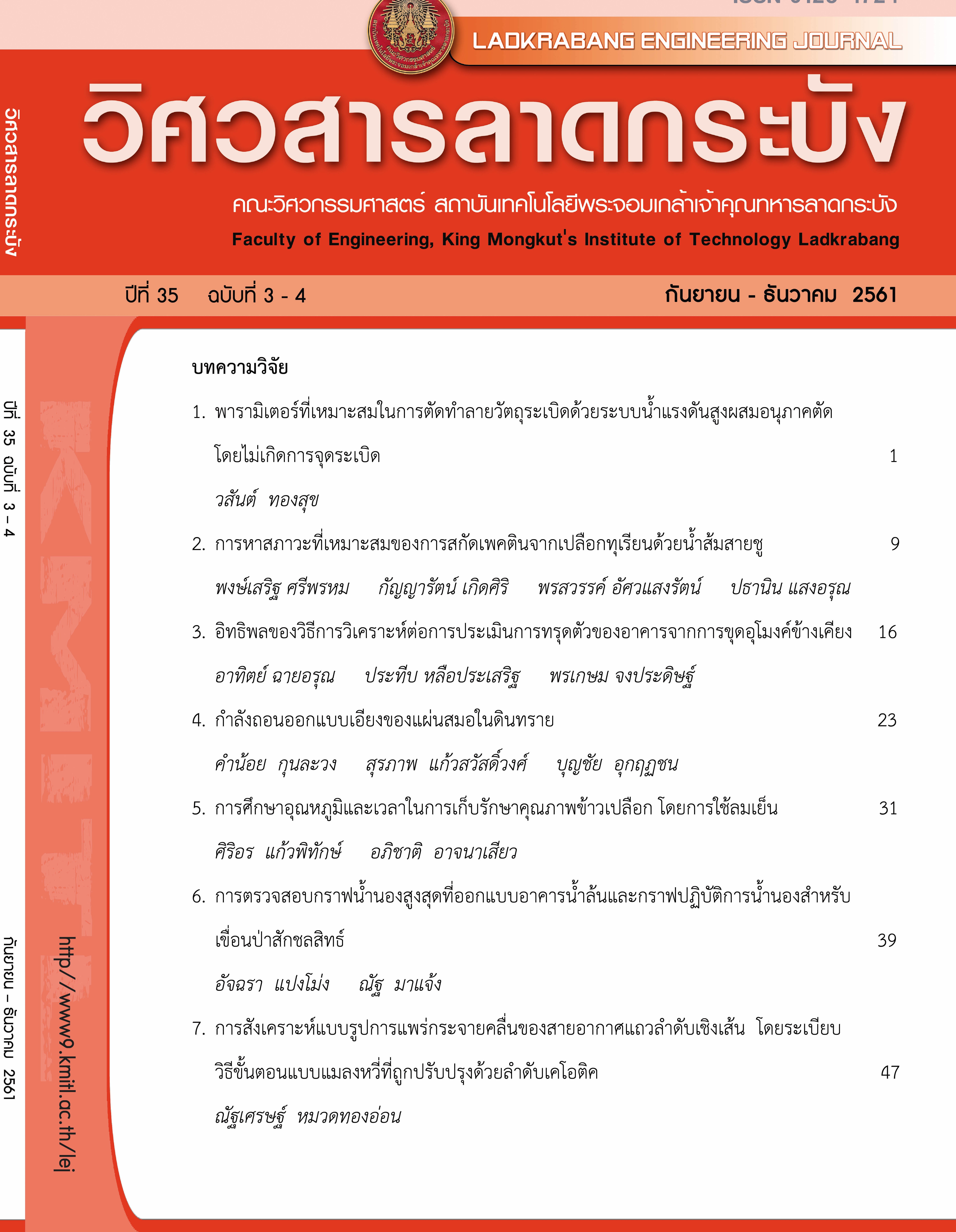The Appropriate Parameter from Disposal of Explosive Items with Abrasive Water Jet Cutting System (AWCS) without Self-Ignition
Keywords:
Abrasive Water Jet Cutting System, Energy dissipation, Explosive disposalAbstract
This Article will focus on the Energy dissipation which occurs in explosive items during the process concerned to The Disposal of Explosive Items with Abrasive Water Jet Cutting System: AWCS. Also, it utilizes for determine Parameter from AWCS machine and to ensure that it secures in operating for EOD (Explosive Ordnance Disposal) Technicians by without self-ignition of explosive items. The Experiment was chosen by the method of cutting the steel plate: size 10 mm through adjusting the Variation of Parameter under AWCS machine which were Pressure Water Jet (Pressure: p) and Velocity of nozzle (Traverse speed: v); generated energy influence to both of Parameters. On the other hand, there is an experimental condition which is incapable to direct the assessment of Cutting system.Thus, the result of measurement was selected by Surface Roughness Tester and to compare with typical system for generated energy as statement above. After that, there was experimental cutting system through real explosive items with Parameter that generates highest energy. In order to verify the system, it must be safe, utilize for the operation and not driven to self-ignition as following theory in the research. The Explosive Items are taken for these experiments including; Mortar Shells size 120 mm, Air Bomb size 100 Ib which contained TNT as explosion material and Minimum Ignition Energy (MIE) is equivalent to 75 mJ and Primary explosion which is used for Blasting Cap/Detonator and it places in Fuze portion; Lead Azide with MIE at 7mJ. From the experimental results, the disposal of explosive items with Abrasive Water Jet Cutting System under Parameters conditions which influence to generate highest Kinetic Energy, has not found its self-ignition. Hence, the Parameters from experiment are able to determine the Performance Standard for EOD Technicians as safely.
References
V. Brauskak, “Ignition Handbook,” Fire Science Publishers, 2003.
Lynn Stanley, “How water pump technology powers water jet line for demilitarization of high-explosive munitions,” FF Journal, 2012.
Paul L. Miller, “Formation of Sparks from Abrasive Water Jet Cutting and Their Effect on Condensed Explosives,” Proceedings of the Twenty-Sixth DoD Explosives Safety Seminar, 1994.
Bureau of Alcohol, Tobacco, Firearms and Explosives, “Federal Explosives Law and Regulations,” ATF Publication, pp. 47 - 53, 2007.
Daniel Krajcarz, “Comparison Metal Water Jet Cutting with Laser and Plasma Cutting,” Procedia Engineering, vol. 69, pp. 838 - 843, 2014.
Wong, “A Study of Abrasive Water Jet Cutting of Metallic Coated Sheet Steel,” International Journal of Machine Tools and Manufacture, vol. 39, pp. 855 - 870, 1999.
Xiaojin Miao, Zhengrong Qiang, Meiping Wu, Lei Song, Feng Ye, “The Optimal Cutting Times of Multipass Abrasive Water Jet Cutting,” The International Journal of Advance Manufacturing Technology, vol. 97, pp. 1779 - 1786, 2018.
Derzija Begic-Hajdarevic, Ahmet Cekic, Muhamed Mehmedovic, Almina Djelmic, “Experimental Study on Surface Rougness in Abrasive Water Jet Cutting,” Procedia Engineering, vol. 100, pp. 394 - 399, 2015.
R. S. Mohan, A. W. Momber, R. Kovacevic, “Energy Dissipation Control in Hydro-Abrasive Machining Using Quantitative Acoustic Emission,” The International Journal of Advanced Manufacturing Technology, vol. 20, pp. 397 - 406, 2002.
A. W. Momber and R. Kovacevic, “An energy of high-speed abrasive water jet erosion,” Proceeding of the Institution of Mechanical Engineers, vol. 213, pp. 463 - 472, 1999.
A. W. Momber and R. Kovacevic, “Calculation of exist energy in abrasive water jet cutting,” W.E. Alzheimer (ed.) Manufacturing Science and Engineering, vol. 1, pp. 361 - 366, 1994.
Downloads
Published
How to Cite
Issue
Section
License
The published articles are copyrighted by the School of Engineering, King Mongkut's Institute of Technology Ladkrabang.
The statements contained in each article in this academic journal are the personal opinions of each author and are not related to King Mongkut's Institute of Technology Ladkrabang and other faculty members in the institute.
Responsibility for all elements of each article belongs to each author; If there are any mistakes, each author is solely responsible for his own articles.






